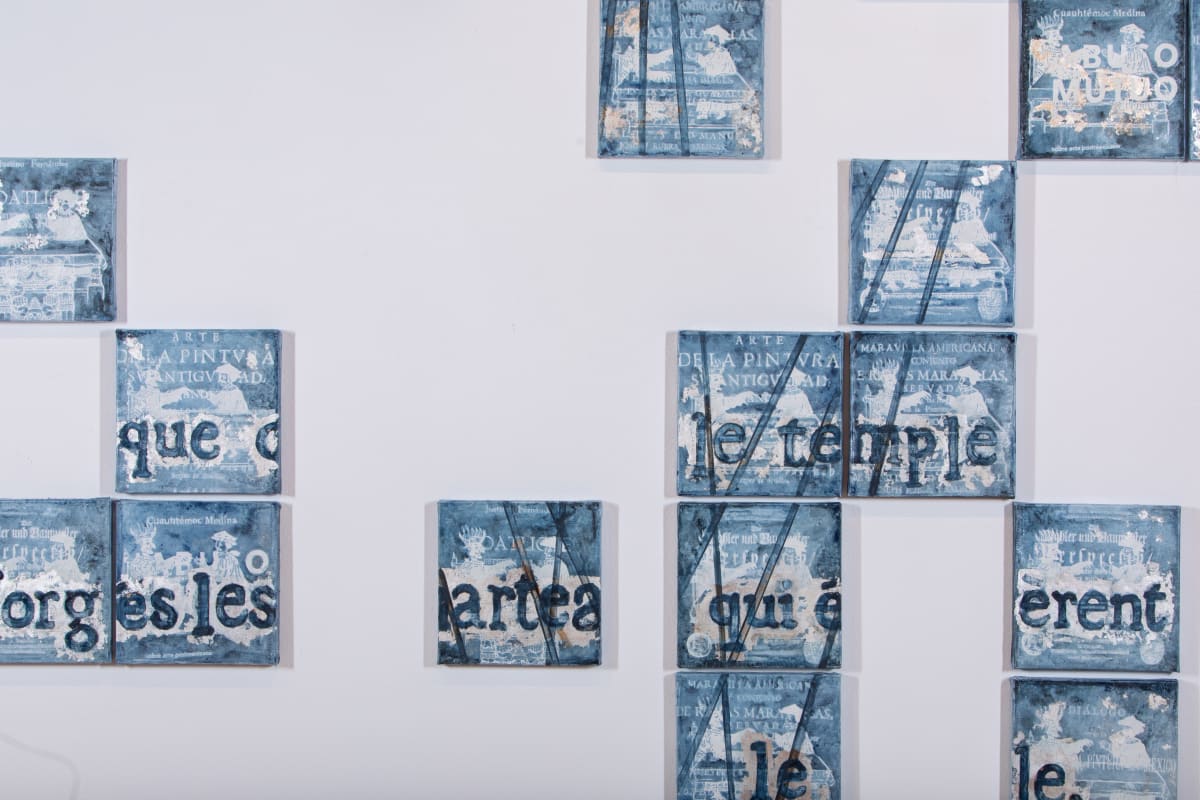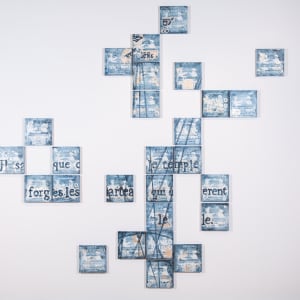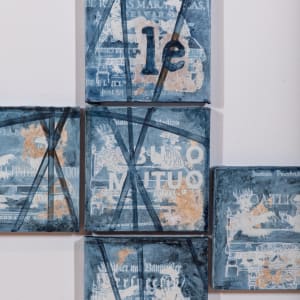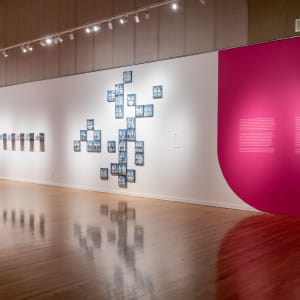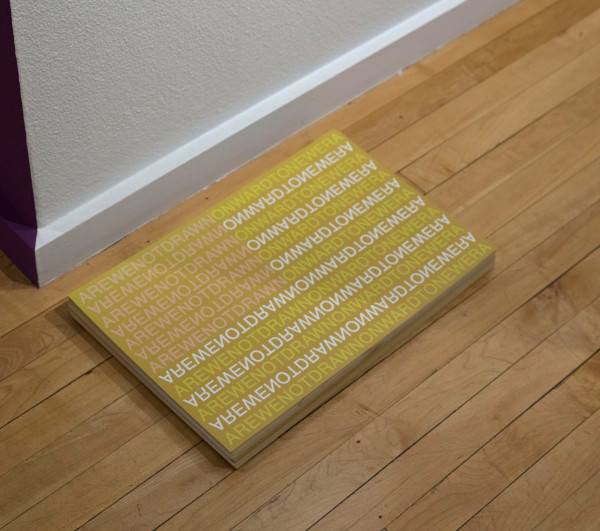
UNLV Marjorie Barrick Museum of Art
Las Vegas, Nevada
We believe everyone deserves access to art that challenges our understanding of the present and inspires us to create a future that makes space for us all.
Message- Francisco Guevara
- Between a Devil and a Jesuit, 2022
- Indigo, silver leaf, on canvas; 28 panels
-
On Loan
Francisco Guevara
Between a Devil and a Jesuit, 2022
Indigo, silver leaf, on canvas.
Dimensions Variable
Courtesy of the Artist
“In New Spain, present-day Mexico, and the southern United States, the formation of class ideology is inseparable from the history of the Jesuits, the Roman Catholic missionary organization known as the Society of Jesus. The practice of ex-votos was encouraged by the Jesuits, becoming an institutional tool for devotion, control, and resilience; nevertheless, ex-votos still carry the classist ideological burden when labeled as 'popular,' 'folk,' or even 'primitive' art.
Between the Devil and a Jesuit is a polyptych consisting of 28 canvases printed with industrial blue ink, painted with a natural indigo colorant prepared by hand, and embellished using colonial silver leaf techniques. Each panel is based on a 1642 woodcut print of the same title and merged with seminal texts about beauty, aesthetics, and art, selected from 400 years of Mexican art history. Taking into consideration the performative aspects of religious polyptychs and the spatial function of ex-votos, the installation represents a sort of colonial tracing of Puebla, Mexico: a conceptual map that traces the location and unusual number of Jesuit colleges in the city, simultaneously functioning as a model for spatializing classist ideology.”
—Francisco Guevara
“En la Nueva España, hoy en día México y el sur de los Estados Unidos, la formación de la ideología de clase es inseparable de la historia de los jesuitas, la organización misionera católica romana conocida como la Compañía de Jesús. La práctica de los exvotos fue fomentada por los jesuitas, convirtiéndose en una herramienta institucional de devoción, control y resiliencia; sin embargo, los exvotos todavía llevan la carga ideológica clasista cuando se les clasifica como arte 'popular', 'folclórico' o incluso 'primitivo'.
Entre el diablo y un jesuita es un políptico compuesto por 28 lienzos impresos con tinta azul industrial, pintados con un colorante índigo natural preparado a mano y adornados con técnicas coloniales de hoja de plata. Cada panel se basa en un grabado en madera de 1642 con el mismo título y se fusiona con textos fundamentales sobre belleza, estética y arte, seleccionados de 400 años de historia del arte mexicano. Tomando en consideración los aspectos performativos de los polípticos religiosos y la función espacial de los exvotos, la instalación representa una especie de trazado colonial de Puebla, México: un mapa conceptual que rastrea la ubicación y el número inusual de colegios jesuitas en la ciudad, funcionando simultáneamente como modelo para espacializar ideología clasistas”.
—Francisco Guevara
